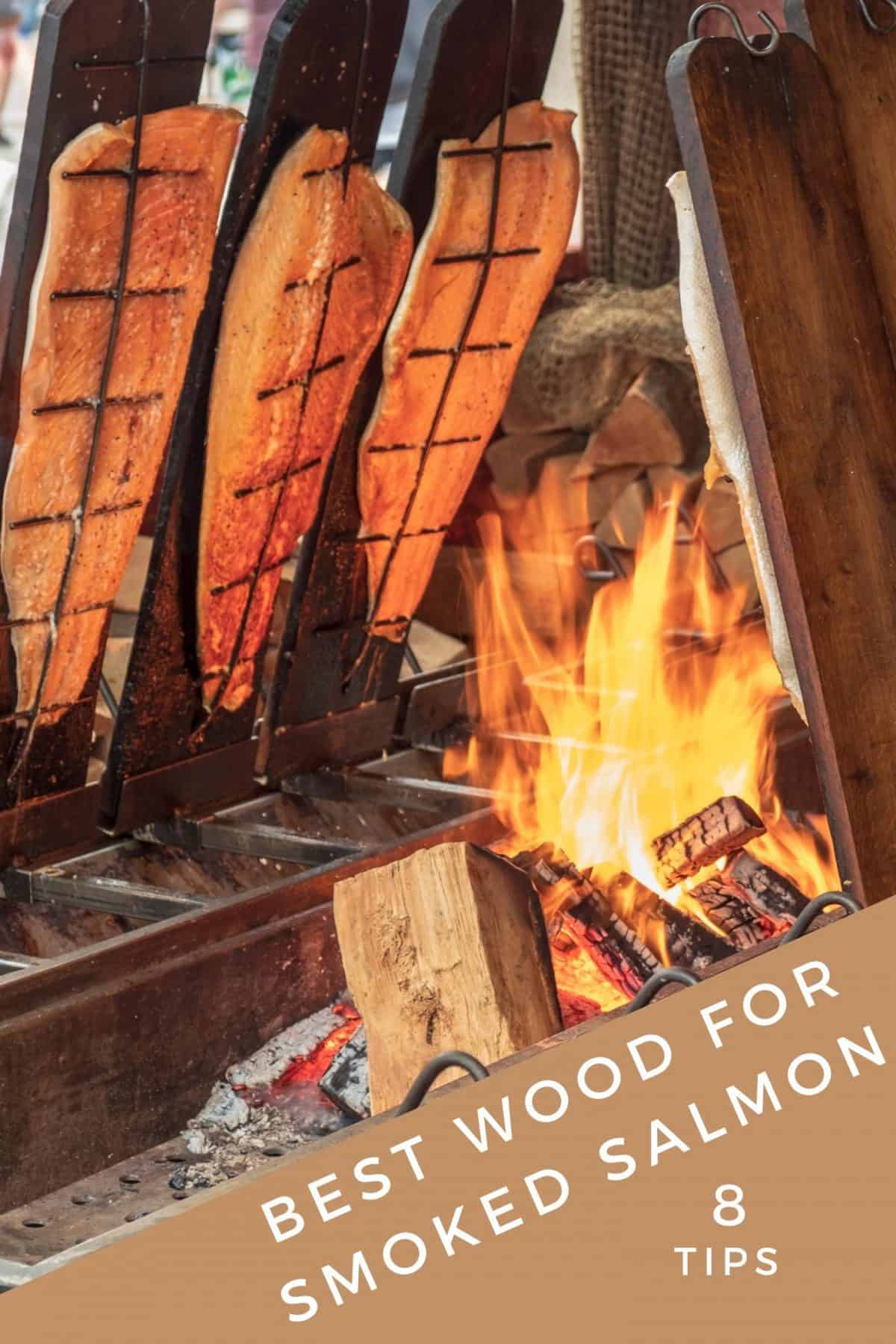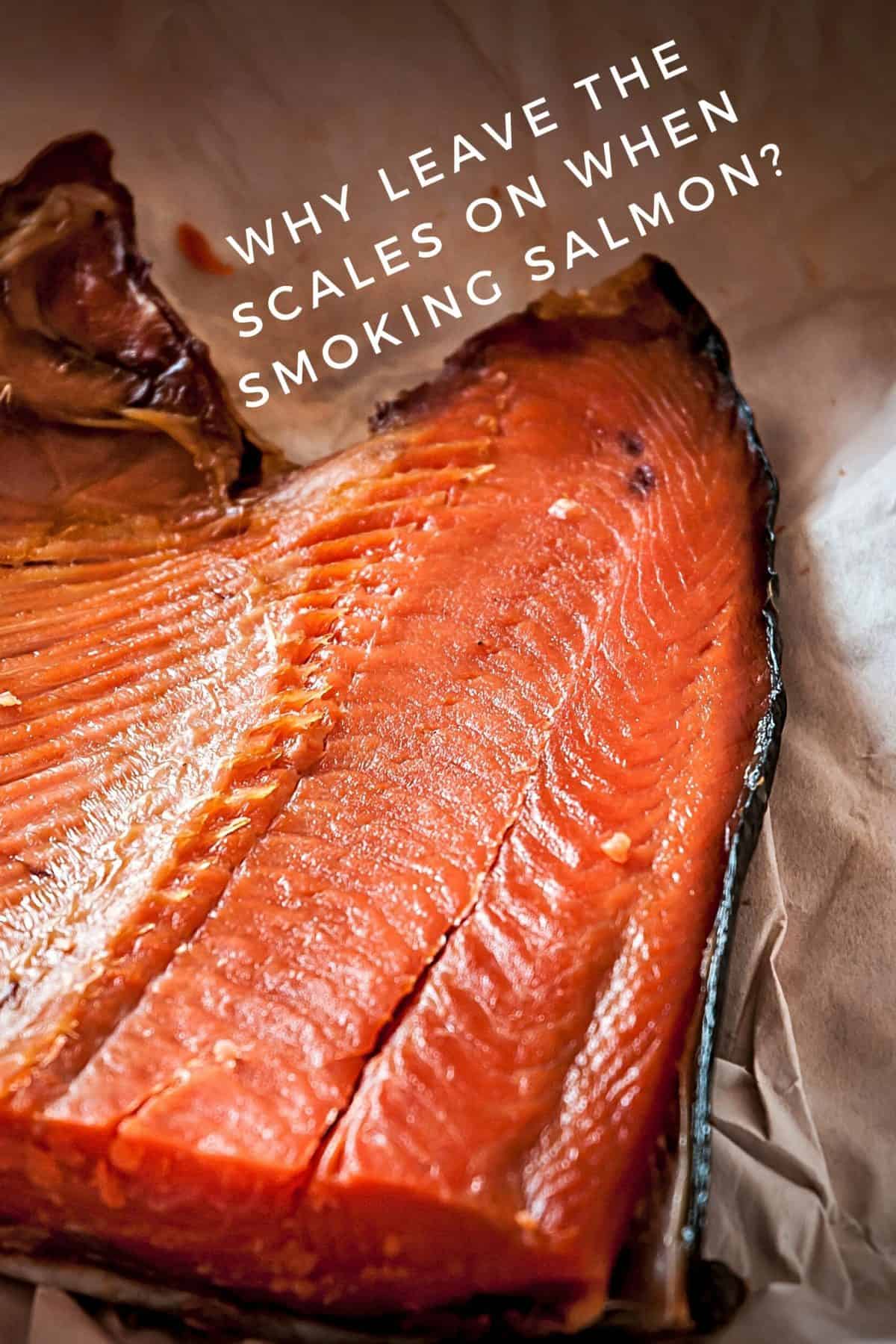Salmon is a great meat to eat. It has a rich, juicy taste and an exceptional flavor profile.
It’s also extremely healthy for you! It’s rich in omega fats, great for skin, and weight loss-friendly, plus it lowers blood pressure and supports healthy brain activity.

If you eat salmon often, you’re probably looking for different ways to prepare it. Smoking salmon can add some variety to your menu.
If you’ve never smoked salmon before, then you may be wondering about the best methods to use, as well as what techniques to use.
This article has everything you need to know about smoking salmon. Read on to find out more.
In this post we'll cover:
Best woods for smoking salmon
Salmon is delicate meat that doesn’t have the rich taste of beef. Therefore, it can easily be overpowered by stronger woods.
Here are a few milder kinds of wood that’ll provide a nice subtle flavor:
- Alder: Some may think that alder wood is too delicate for salmon. However, because salmon must smoke for long periods of time, it’s the perfect choice. It’ll lend a light smokiness to the salmon without overpowering it.
- Apple: Slightly stronger than alder, apple wood gives salmon a smokey, fruity taste that takes it to the next level. It provides the perfect amount of smokey sweetness without detracting from its flavor. Mix it with mesquite to give the salmon just a bit of bite!
- Maple: Maple wood is another that adds a sweet flavor to salmon without overpowering it. It’s never bitter and it works to provide a delicious taste that complements salmon perfectly.
- Cherry: Cherry wood is more versatile than you might think! It adds a mild sweetness while still allowing the salmon to take center stage. It works well when mixed with alder, pecan, or oak.
- Pecan: Pecan is from the hickory family and therefore, it’s quite a bit stronger than the other fruit woods on this list. This means it should be used sparingly. But when used in moderation though, it’ll give your salmon a warm and delicate taste.
- Walnut: Walnut is another type of wood that can be overpowering if overused. However, it gives salmon a nutty, smoky flavor that elevates the taste. Proceed with caution.
- Oak: Oak is another wood that runs that delicate balance between giving salmon a great taste and overpowering it. However, it can give your salmon a unique medium sweet flavor that just might make it all worthwhile. It’s best for cold smoking salmon.
- Beech wood: Beech wood will produce a light, clean flavor that’s also somewhat nutty. It’ll penetrate the fish without affecting the distinct taste.
Woods to avoid when smoking salmon
There are certain woods that definitely WON’T work for smoking salmon. In general, these woods will overpower the taste of the salmon.
Here are a few you’ll want to avoid:
- Cedar: Cedar planks and salmon are a match made in heaven. Cedar for smoking? Not so much. As a rule, cedar doesn’t burn well in a smoker and should be avoided.
- Hickory: Hickory wood is very strong and is best used for red meat. Although some argue that it could be used to smoke salmon, you have to be extremely cautious when doing so. Hickory can easily overpower salmon to the point where it’s extremely bitter and practically inedible.
- Mesquite: Mesquite is best for dark meats that can stand up to the strong flavor. It should definitely be avoided when smoking salmon, but if you just can’t get enough of the taste, try mixing it with a milder wood.
- Conifers: Woods from conifers and pines contain a lot of sap and resin. So they’re unsuitable for smoking any type of food. They’ll give food a funny taste and can even make diners sick!
- Green wood: Wood that’s very green will also make food inedible and can make people sick.
Salmon smoking tips
If you’re smoking salmon, there are certain tips and techniques you should be familiar with. Here are a few that should be noted.
Cook time
Salmon takes a long time to smoke, usually between 8 and 12 hours. So it’s very important to keep the temperature under control while it’s smoking.
Be sure to use a smoker that you trust to stay within the correct parameters. An electric smoker is recommended.
Start with fresh salmon
Of course, you can smoke frozen salmon. But it’ll taste much better if you start with fresh filets!
To filet or not to filet
If you choose to filet your fish yourself, make sure you know what you’re doing. You can easily end up shredding the entire salmon.
If you buy a fish that’s been pre-fileted, try to get one with the pin bones still in. These are the bones that run the length of the fish; removing them hastily can break the fish’s flesh.
Instead, opt for removing them with pliers at home.
To scale or not to scale

Leaving the scales on the salmon will make your filet easier to grill and slice. Plus, it won’t affect the flavor.
Therefore, we say scales on!
Also read: wood pellets vs chunks vs chips: which should you choose?
Check out this YouTube video by user Chef Tips to see salmon being smoked:
Preparation for smoked salmon
You can prepare your salmon for smoking in one of two ways.
The first is to dry cure it. Using this method, you’ll smother the fish in salt and then wash it off after letting it sit for hours.
The alternative is to wet cure it or brine it. With this method, you’ll allow your fish to sit in a bath of water, salt, and sugar.
Here’s a recommended recipe:
- 1 cup coarse salt
- 1 cup loosely packed dark brown sugar
- 3 quarts water
This will be enough for 1 filet. If you’re cooking 2 filets, double the ingredients. If you’re cooking 3 filets, triple them, and so on.
The salmon should be soaked for 6 hours total and should be turned occasionally. Once it’s done brining, take it out and dry it.
The curing method is one of the things that differentiate salmon from lox
